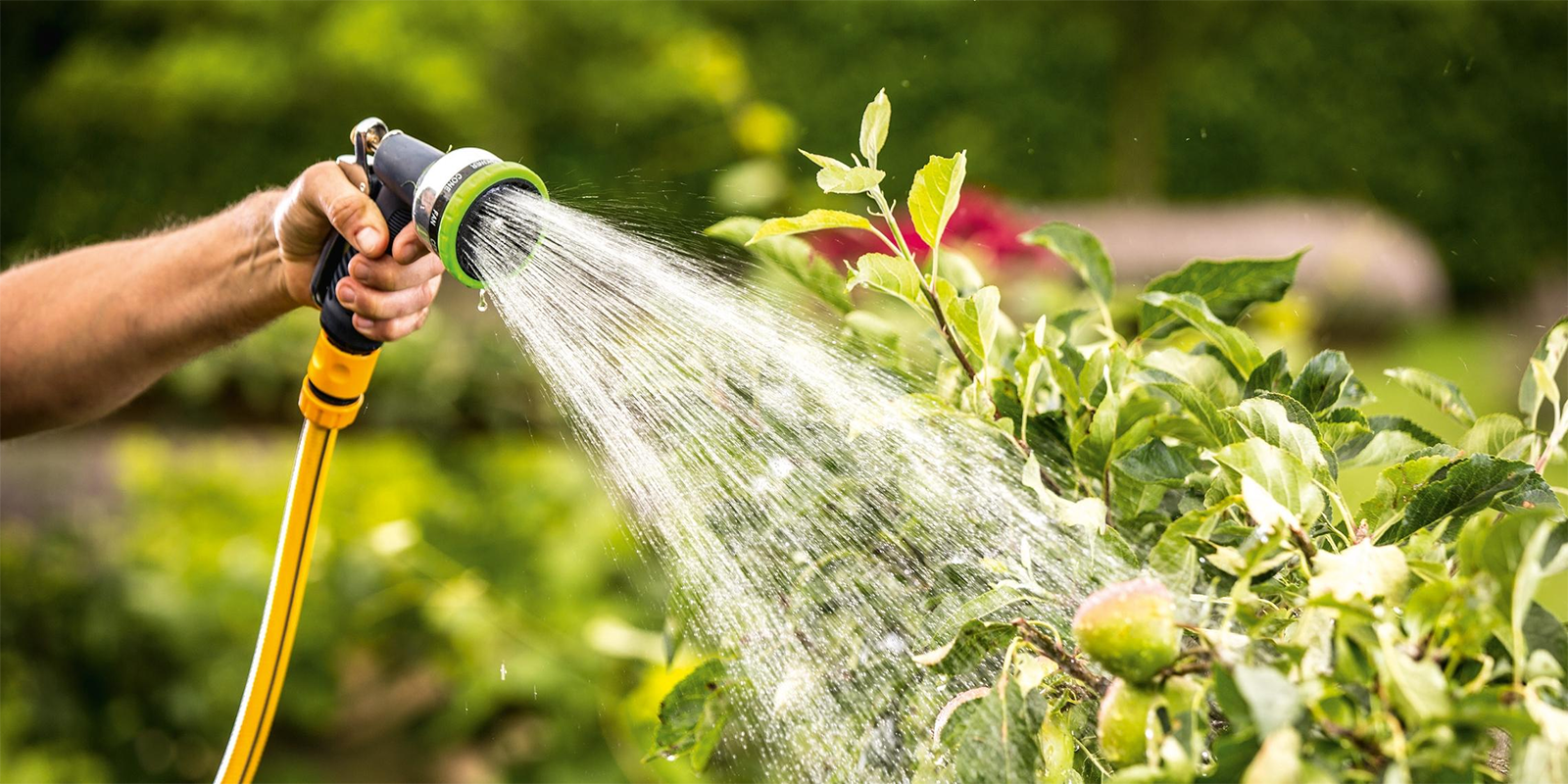
Watering Plants When Rain Is Scarce
During times of little to no rain, a steady, sensible watering routine will protect your landscape and head off bigger problems later. Follow these tips to make sure your plants survive these periods of drought.
How to Spot Water Stress
- Yellowing leaves and premature leaf drop
- Brown, curled, or drooping foliage
- Early fall color showing up now
- Evergreens shedding interior needles earlier than normal
- Lawns turning yellow or brown in patches
- More insects and disease on already stressed plants
If you're seeing any of the above, act right away.
Watering Priorities
- Some water is better than no water. Even a modest, consistent routine helps plants ride out a dry spell.
- Time of day matters. Run sprinklers early in the morning or later in the evening to reduce evaporation and improve coverage on larger areas.
- Newly planted trees and shrubs. Aim your hose or drip right at the root ball - keep the roots wet, not the surrounding empty soil. Slow, deep soaks beat quick sprinkles.
- Established trees in turf. If you're keeping your lawn green, you're also watering the tree roots beneath it. Those established trees will benefit from the same irrigation.
- Evergreens need attention. Late summer is when they naturally shed interior needles. Watering now reduces excessive needle drop this fall.
- Indicator plants. Blue hydrangea, black-eyed susans, impatiens and anemone flag water needs quickly. If they're wilting, everything else likely needs water too.
Practical How-To
- Deep, infrequent watering for roots. For trees and shrubs, water long enough to moisten soil 6-10 inches deep. Allow the surface to dry slightly between sessions so roots can breathe.
- Sprinklers for coverage, hoses for precision. Use a sprinkler to cover lawns and beds, then spot-water new plantings and anything that still looks thirsty.
- Mulch helps. A 2-3 inch layer around plants (kept a few inches off trunks and stems) reduces evaporation and evens out soil moisture.
- Check your work. Use a screwdriver or soil probe - if it pushes in easily and comes out cool and damp, you're in the zone. If it's hot and dusty, keep watering.
- Irrigation check. Look for broken heads, misaligned spray, or runoff onto pavement. Adjust so water lands where roots actually are.
Lawns During Dry Spells
- Stay green, stay competitive. Early dormancy opens the door for weeds. Crabgrass is taking over now - keeping turf green and dense is your first line of defense.
- Water as needed. Apply only enough to prevent widespread wilt and browning. Water early morning for best uptake.
- Mow a bit higher. Taller grass (about 3-4 inches) shades soil, conserves moisture, and discourages weeds.
- Watch for grubs. Stressed lawns are a grub magnet. If turf peels back easily or you see birds and skunks tearing it up, investigate and treat promptly.
- Traffic control. Limit play and heavy foot traffic on stressed areas to prevent further damage.
Pests and Disease
Dry, stressed plants are easy targets. Consistent watering helps plants defend themselves. Still, keep an eye out for chewing insects, mites, and fungal issues. Treat problems early and improve plant vigor with better watering rather than leaning only on sprays.
Quick Checklist
- Water early or late for efficiency
- Prioritize new plantings - soak the root ball slowly
- Keep lawns green enough to deter weeds and support tree roots
- Give evergreens steady moisture to limit fall needle drop
- Use "indicator" plants as your yard-wide water alarm
- Mulch beds to hold moisture and moderate soil temperatures
- Inspect irrigation and adjust for full, accurate coverage
- Scout for grubs, weeds, and disease on any areas that still look stressed